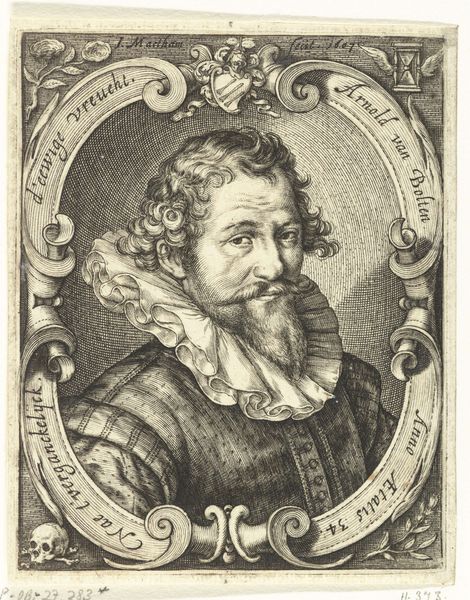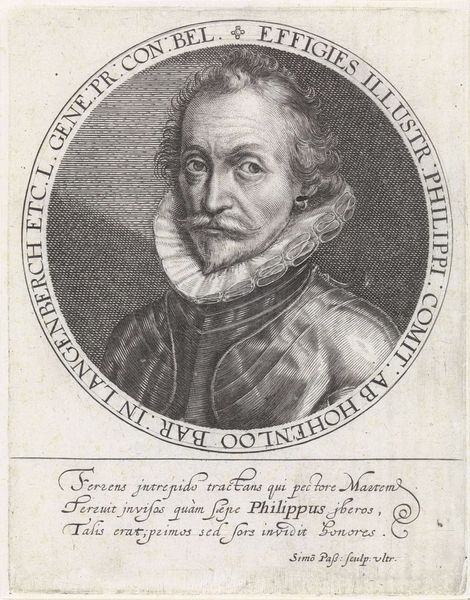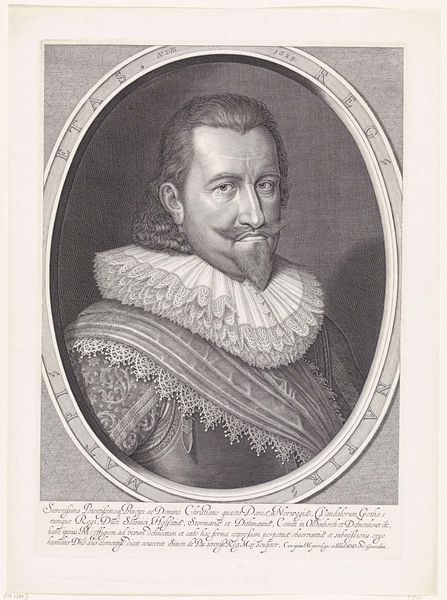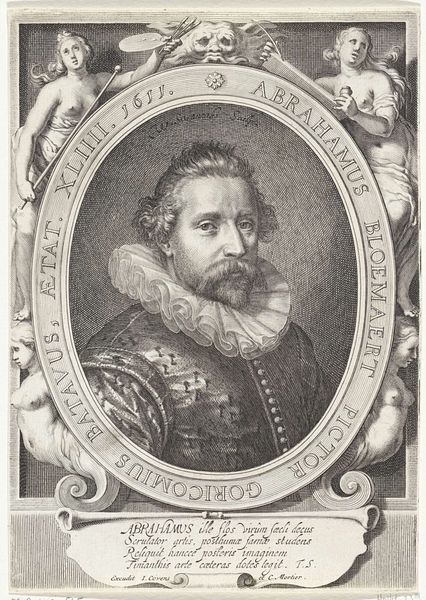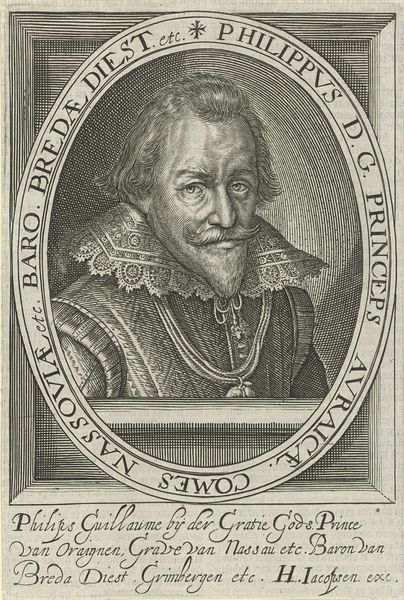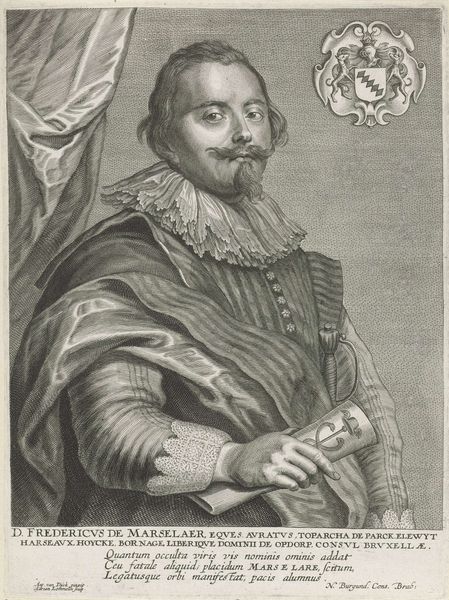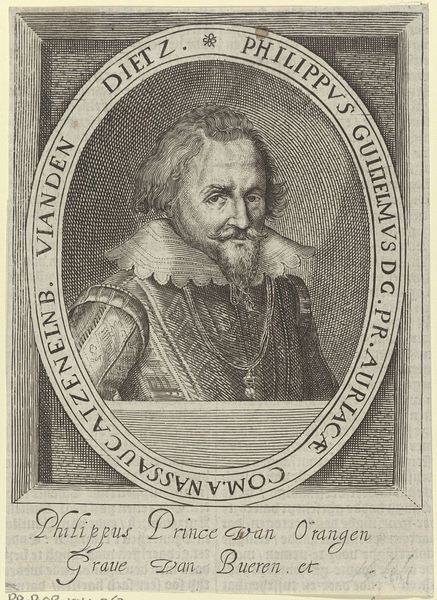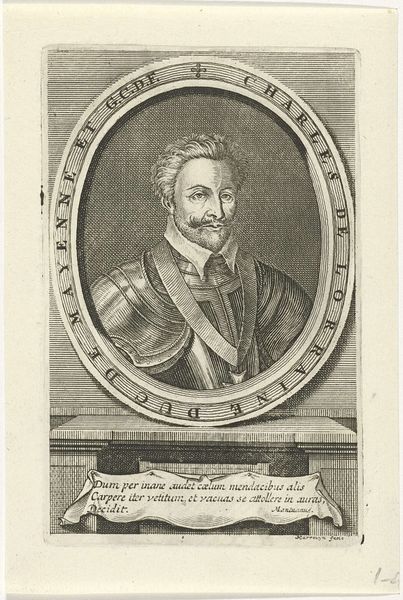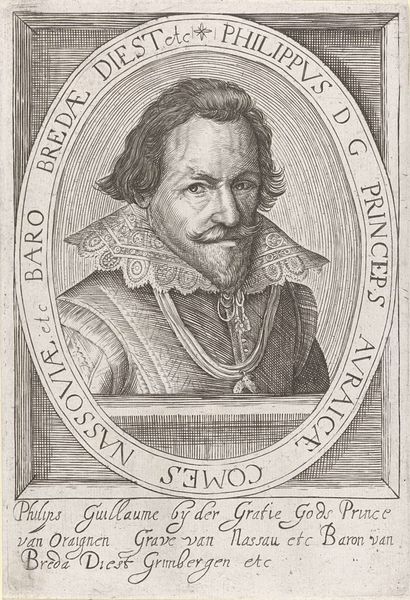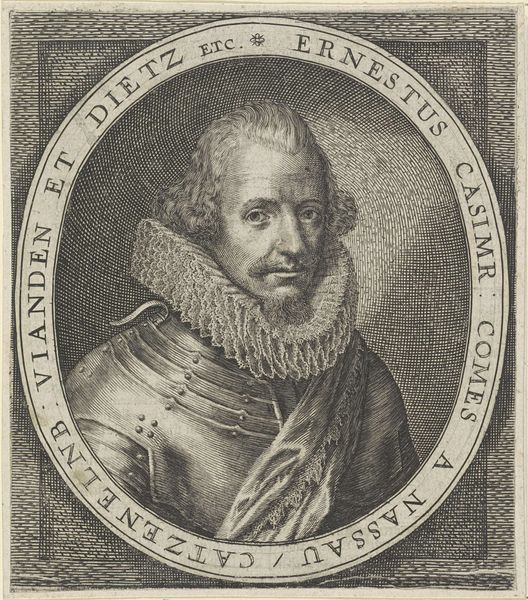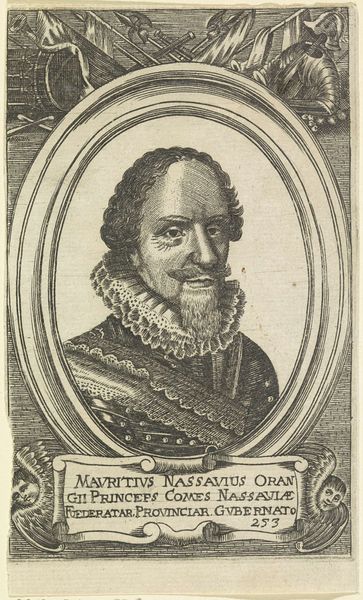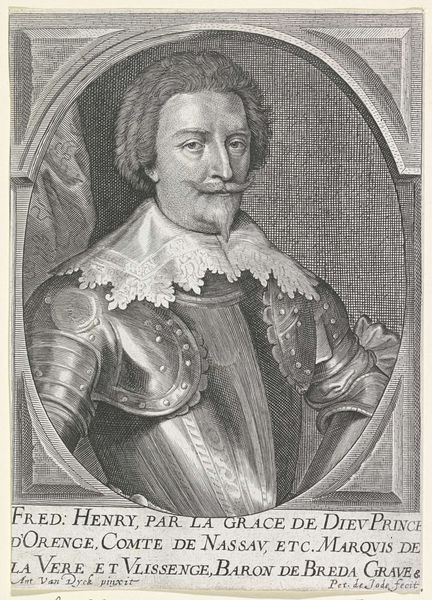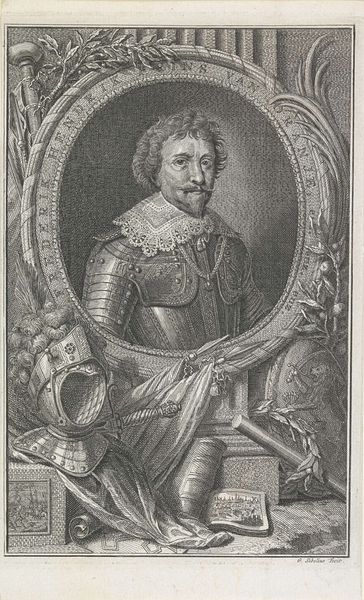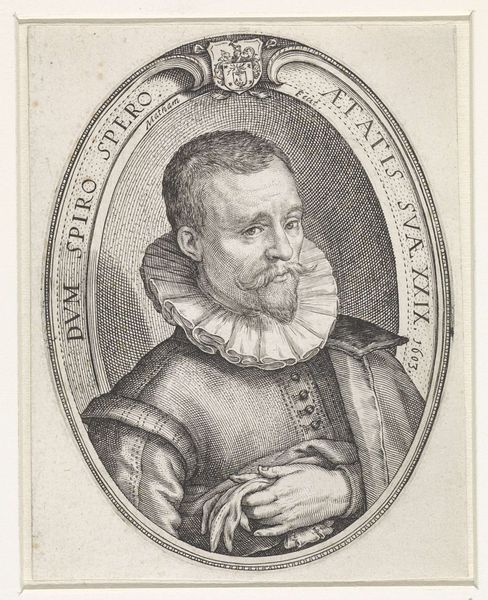
engraving
#
portrait
#
baroque
#
old engraving style
#
figuration
#
portrait reference
#
portrait drawing
#
history-painting
#
engraving
Dimensions: height 139 mm, width 107 mm
Copyright: Rijks Museum: Open Domain
Jacob Matham created this portrait of an unknown 49-year-old man in 1597, using engraving. This printmaking technique involves cutting lines into a metal plate, applying ink, and then pressing it onto paper. The image’s impact comes from the crispness and precision of the engraved line. Look at how Matham uses hatching and cross-hatching to create a sense of volume and texture in the man’s face, hair, and clothing. You can see how the controlled process lends itself well to capturing fine details. This was a valuable skill in the 16th century, as prints were a primary means of disseminating images and information. Engraving was labor-intensive, requiring a high degree of skill and training. The resulting prints were relatively affordable, making them accessible to a wider audience. This positioned the artist as a skilled artisan, but also contributed to the rise of a commercial art market. So, even a portrait of an unknown man tells us something about the structures of labor and consumption.
Comments
No comments
Be the first to comment and join the conversation on the ultimate creative platform.
